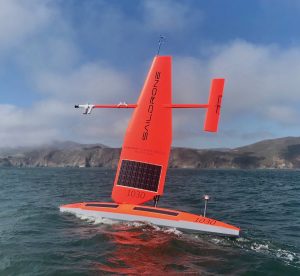Saildrones – Sailing the Seas for Science
Heather Tabisola, NOAA’s Pacific Marine Environmental Laboratory in Seattle, WA
Have you ever seen a drone? Some people think they look like helicopters. But not all drones fly! Some sail across the water, powered by wind, collecting information on the ocean and atmosphere as they go. In this webinar, you will talk to a NOAA scientist who works with saildrones. This tough robot can spend up to a year at sea, travels through the water at up to 8 knots, and has a range of more than 16,000 nautical miles. (Grade 2-6 but all ages will enjoy.)
Resources to access at home:
»Since 2015, the Innovative Technology for Arctic Exploration program at PMEL has kept a blog during the saildrone Arctic field season, you can find 2019’s here: https://www.pmel.noaa.
» NOAA Saildrone Research 2016 – Live Broadcast Kickoff: https://youtu.be/EholPRD-UJ4
» Experience the Saildrone Antarctic Circumnavigation with your students via a series of classroom lessons developed by Saildrone and the 1851 Trust, an innovative UK education charity committed to inspiring young people to become innovators of the future and stewards of the environment. Each lesson is tailored to fit into any STEM curriculum and supported by Saildrone’s live mission updates and regular blog posts. The lessons are free for use by teachers and educators. https://www.
» Several science blogs on saildrones:
Detecting Fish from Ocean-Going Robots to Complement Ship-Based Surveys, Detecting Fish from Ocean-Going Robots to Complement Ship-Based Surveys, Unmanned Surface Vehicles Track Marine Mammals on Extended Foraging Trips for the First Time, and Saildrones Head to the Arctic for an Arctic cod survey

